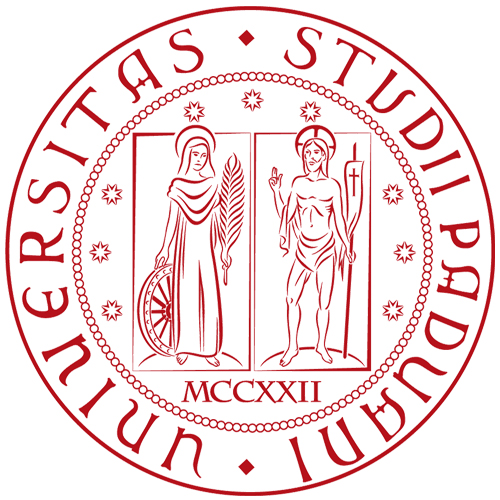Featured
PHRC033 : Dedication to Arsinoe Philadelphos, Palaipaphos - Cyprus (270-240 BC) Dedication
34.707430,32.573902This limestone block with a roughly square front surface is what remains of a small rectangular altar of Arsinoe Philadelphos, of a type well known in Palaipaphos. The stone was then hammered to reduce it into a block to be used as building material. Thus, the anomalous profile of the upper part of the stone is not original, but the result of a later (modern?) intervention to fix the block into a wall....
PHRC032 : Dedication to Arsinoe Philadelphos, Palaipaphos - Cyprus (270-240 BC) Dedication
34.707430,32.573902This small quadrangular altar with cornices belongs to a type well documented in the dossier of dedications to Arsinoe Philadelphos in third-century Cyprus. It presents a relatively well executed inscription which distinguishes it from other specimens belonging to the sanctuary of Aphrodite Paphia at Palaipaphos....
PHRC031 : Dedication to Arsinoe Philadelphos, Palaipaphos - Cyprus (270-240 BC) Dedication
34.707430,32.573902This dedication to Arsinoe is written in three lines, regardless of the word ending, on a very irregular rectangular altar with a shallow depression on the upper surface. Such a small altar would serve to offer vegetables and perfumes to Arsinoe Philadelphos in the sanctuary of Aphrosite Paphia....
PHRC030 : Dedication to Arsinoe Philadelphos, Palaipaphos - Cyprus (270-240 BC) Dedication
34.707430,32.573902This plaque, now lost, contained the sole dedication to Arsinoe Philadelphos written on marble known from the Paphos area. Despite this material, which was rare and expensive in Cyprus, the inscription is of very poor quality and presents various examples of phonetic writing and spelling mistakes. The plaque was probably attached to a small altar or another cultic object dedicated by a private donor in the sanctuary of Aphrodite Paphia.
Images:
Photo 1: Photo of the sanctuary of Aphrodite at Kouklia; via Wikimedia Commons ...
PHRC029 : Dedication of the royal collaborator Dionysodoros to Attalos I, Pergamon - Mysia (230-197 BC) Dedication
39.119662,27.167783This marble block was the base of the statue of a dancing Satyr dedicated to Dionysos and King Attalos I by Dionysodoros, a top-ranking member of the Pergamon army and court. The finely inscribed dedicatory epigram testifies to the intellectual activity of the Pergamon court under Attalos I and to the role Dionysos played in it as a god of art, banquets, and of mystery cults. Found reused in the foundations of a late-Hellenistic or early-Imperial building not far from the Asklepieion, this stone and the statue it bore may have originally stood in a building along the Sacred Way connecting the city to the Asklepieion, or perhaps even inside the Asklepieion itself. The paleography and prosopography of the inscription point to the 220s as the most plausible date for the dedication. This marble block is what remains of a statue base which was dedicated to Eumenes II together with an altar of the king in the precinct of Athena. The stone was later reused in the Byzantine walls situated south of the sanctuary's terrace. The identification of the name of the recipient king (in lacuna) is made possible by the presence of the formula Theos Soter: this became a common denomination of Eumenes II after his death (158) whereas Attalos I was always referred to only with the epithet Soter. This altar is decorated with a rosette surrounded by two bucranes and presents an inscription of good quality but with the uncommon detail of a cursive shape of omega, which may be interpreted as the influence of cursive writing on a private dedication. The stone was found in the neighbourhood of Gurnellia, situated south-east of the hill of Pergamon, in an area which was not yet urbanized in the second century, so that the original location of the altar remains unknown. The chronological limits of the dedication are provided by the use of the epithet Soter (mid-180s) and by the death of Eumenes II (159/8), after which the king was referred to with the denomination Theos. This finely inscribed altar was posthumously dedicated to Eumenes II by the cultic association of the Bakchoi. Its original location was probably the precinct of Athena on the acropolis, a prominent space for the royal representation and identity of the Attalids. The inscription testifies to the appropriation by a private religious group of the official ideological link associating the Attalid dynasty with Dionysos. Moreover, the quality of the inscription as well as the use of the rare literary epiclesis Euastes for Dionysos confirm that the Bakchoi were members of the Pergamon elite, perhaps enjoying a direct link with the royal court and with its cultural and religious life. This altar, decorated with an oak wreath, a Capricorn and a cornucopia, was dedicated to Augustus by the leader of the Boukoloi (‘Cowherds), a private cultic association venerating Dionysos Kathegemon in Pergamon. The dedication was probably accomplished soon after the Roman Senate granted Octavian the title Augustus (Greek Sebastos) and the ‘corona civica’ and testifies to the contemporaneous enthusiasm for the pacification of Asia Minor under the early Principate. The altar, which was provided with a hollow top able to receive libations and perfume offerings, was part of the cultic tools of the association, which met in a luxury mansion erected on the south-western slope of the Pergamon hill, the so-called House with the ‘Podiensaal’. This dedication probably constitutes the... Found in a Byzantine wall near the so-called ‘cult room’ of a Hellenistic elite house on the southern slope of Pergamon, this rectangular altar might testify to the survival of the cult of Attalos I after the end of the dynasty. The writing of A with both a bowed and a broken crossbar further strengthens the hypothesis that this altar was dedicated after the death of Attalos I. This rectangular altar of Attalos I is one of the two found among the Byzantine structures that were built within the ruins of the ‘House with the Podiensaal’, a luxury peristyle house erected in the mid-2nd century and later used, with several changes, until the end of Antiquity. While theses specimens are per se not different from the other altars of the the cult of Attalos I Soter in Pergamon, their find spot is particularly intriguing as it could testify to the survival of the cult of this king after the end of the dynasty, when the house was in use. This block bears one of the three preserved genitive dedications to Arsinoe Philadelphos from Paros. It was probably inserted in a bigger structure, an altar or a wall.... This fragmentary rectangular altar of Attalos I was dedicated inside the precinct of Demeter on the southern slope of the Pergamon hill. It was probably used for libations and the burning of perfumes. The paleographic detail of A with bowed crossbar suggests a date of dedication between the end of Attalos’ reign and the beginning of Eumenes II’s. This particularly thin rectangular altar was probably erected in the Upper Agora of Pergamon, possibly in relation to one of the sacred (Zeus’ sanctuary) or administrative buildings in the western (nomophylakion) and eastern part of the agora. The writing is irregular and characterized by a shape of A with broken crossbar which suggests a date in the 2nd cent. and therefore a posthumous cult. The donor had only his personal name inscribed, without the name of the father and the function, a solution which finds parallels in contexts where the author of a dedication was easily recognisable by the members of a community. Considering the sacred and administrative functions of the buildings in the agora, Artemidoros might therefore have been a priest or a magistrate of Pergamon. This altar was dedicated by a priestess in the sanctuary of the Mother of the gods in Mamurt Kale, on the top of the mount Yund Dağ situated about 30 kilometers SE of Pergamon. The altar, the biggest among the specimens of Attalid ruler cults at Pergamon, was probably erected during the reign of Attalos and made the king a synnaos theos of the goddess. It was big enough to possibly host small animal sacrifices besides libations and censing rituals. This finely inscribed and decorated altar is the only marble specimen from the Pergamon corpus of small altars of Attalos I Soter. Like the other small altars of the Attalid ruler cult from Pergamon, the rough back surface and its proportions suggest that it was meant to be placed against a wall or in a niche. This altar was found during the excavation of the theatre, a paramount location for the life of Pergamon since not only spectacles but also assemblies were held there. A dedication during the reign of Attalos I is plausible, in particular after the military successes by which he obtained the royal title and the epithet Soter. The text, elegantly written on a stele of local limestone erected in the sanctuary of Athena Polias, is a decree of the city of Itanos establishing cultic honours for king Ptolemy III and queen Berenike II. The absence of the epiclesis Euergetes suggests a date before 243/2 BC. The king is praised for his euergetic and protective attitude toward the city, in continuity with his ancestors' policy. The cultic honours decreed by Itanos comprise the dedication of a sacred precinct of the royal couple in a park near a city gate and the celebration of a festival for the king's birthday. Uncovering the ritual and social aspects of cultic honours for human beings
Until now, the study of cultic honours for Hellenistic political leaders and benefactors has mainly focused on the ideological and diplomatic features of the phenomenon. The project "Practicalities of Hellenistic Ruler Cults" (PHRC) shifts the focus on its practical aspects: the materiality of media, ritual action and space, actors, administration, and the funding of cults. In doing so, PHRC aims to set the debate on ritual honours for human beings in the broader context of Greek religious and social history in the post-classical period.
The PHRC digital library
The sources of PHRC comprise Greek epigraphic texts from the Eastern Mediterranean, between the ages of Alexander and Augustus. At this first stage of... The block was part of a structure dedicated to Arsinoe Philadelphos, probably an altar. The original location is unknown. Two possible options are Aphrodite's sanctuary near the harbour, or the temple of the Egyptian gods, which hosted another dedication to the queen as a member of the ruling couple of the Theoi Adelphoi. The dossier concerning the establishment and regulation of the cultic honours for Queen Laodike at Sardis was elegantly carved on marble blocks in the monumental vestibule of the temple of the Great Mother, the Metroon. The remaining documentation consists of two royal letters, respectively from Laodike and her husband, King Antiochos III, preceded by the head of the civic decree stipulating the inscription of these texts. The honours decreed for the queen, including the dedication of a sacred precinct, called Laodikeion, with an altar, and the celebration of an annual festival Laodikeia (probably on the occasion of the queen’s birthday), were part of the diplomatic attempt of the Sardians to negotiate with Antiochos the recovery of their city after the dramatic end of the rebellion of...
PHRC028 : Dedication to Eumenes II, Pergamon - Mysia (158-133 BC) Dedication
39.131745,27.184077
Images:
Photo 1: Drawing of the stone from IvP I 59
Photo 2: Plan of the medieval walls of the citadel, from AvP VIII.1 (IvP I)...
PHRC027 : Dedication to Eumenes II, Pergamon - Mysia (184-159 BC) Dedication
39.127265,27.180966
Images:
Photo 1: Squeeze of the inscription, from MDAI(A) 27 (1902), p. 95
Photo 2: Map of Bergama...
PHRC026 : Dedication of the Bakchoi to Eumenes II, Pergamon - Mysia (158-133 BC) Dedication
39.131745,27.184077
Images:
Photo 1: Photo of the altar, from Bielfeldt 2010, 157, fig. 16
Photo 2: Plan of the...
PHRC025 : Dedication of the archiboukolos Herodes to Augustus, Pergamon - Mysia (27 BC - 14 AD) Dedication
39.128020,27.184460
PHRC024 : Dedication to Attalos I, Pergamon - Mysia (200-100 BC) Dedication
39.128020,27.184460
Images:
Photo 1: Photo of the altar, from Radt 1989, p. 204-205, photo 1
Photo 2: Plan of the House with the 'Podiensaal' (Late Hellenistic period); photo based on Schwarzer (2008), p. 49, photo 8, modified for Caneva 2020
...
PHRC023 : Dedication to Attalos I, Pergamon - Mysia (240-100 BC) Dedication
39.128020,27.184460
Images:
Photo 1: Photo of the altar, from Radt 1989, p. 204-205, photo 2
Photo 2: Plan of the House with the 'Podiensaal' (Late Hellenistic period); photo based on Schwarzer (2008), p. 49, photo 8, modified for...
PHRC017 : Dedication to Arsinoe Philadelphos, Paros - Cyclades (270-240 BC) Dedication
37.08579,25.150728
PHRC022 : Dedication to Attalos I, Pergamon - Mysia (200-150 BC) Dedication
39.127201,27.184219
Images:
Photo 1: Drawing of the inscription, IvP I 45
Photo 2: Sanctuary of Demeter; via Wikimedia Commons...
PHRC021 : Dedication of Apollodoros to Attalos I, Pergamon - Mysia (197-133 BC) Dedication
39.130167,27.183817
PHRC020 : Dedication of the priestess Metris to Attalos I, Mamurt Kale (Pergamon) - Mysia (240-197 BC) Dedication
38.917185,27.428819
Images:
Photo 1: Photo of the altar; photo R. Rohrer ©D-DAI-ATH-Pergamon-1448, courtesy of the Deutsche Archäologische Institut (DAI)
Photo 2: Detail of the inscription; photo R. Rohrer ©D-DAI-ATH-Pergamon-1449, courtesy of the Deutsche Archäologische Institut (DAI)
Photo 3: Plan of the sanctuary, from...
PHRC018 : Dedication to Attalos I, Pergamon - Mysia (240-197 BC) Dedication
39.131881,27.182911
Images:
Photo 1: Photo of the altar, from Bielfeldt 2010, p. 155, fig. 15
Photo 2: Drawing of the altar, from IvP I 44
Photo 3: Photo...
PHRC011 : Decree of the city of Itanos honouring King Ptolemy III and Queen Berenike II - Crete (246-243 BC) Decree
35.263460,26.261997
Images:
Photo 1: Photo of the stone; Herakleion Museum, Inv. No. 65, copyrighted image. Courtesy of the Greek Ministry of Culture and Sports, Department of Antiquities
Photo 2: view of the...
The PHRC digital library
Université de Liège
PHRC002 : Dedication to Arsinoe Philadelphos, Kaunos - Karia (270-240 BC) Dedication
36.8251,28.623
...
PHRC003 : Dossier concerning the cultic honours for Queen Laodike at Sardis - Lydia (Summer 213 BC) Decree
38.488152,28.040690




